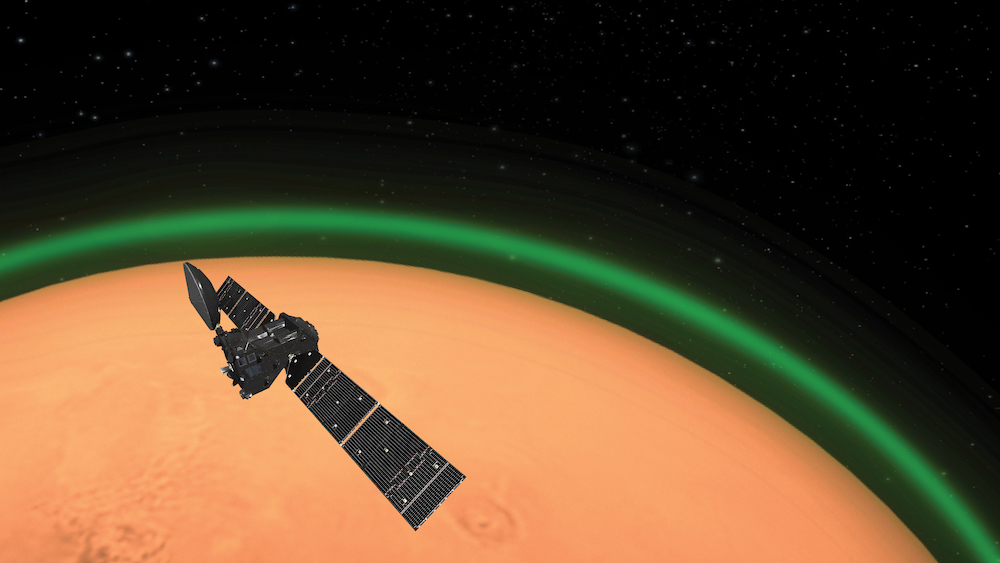It's the first time this kind of glow has been seen on another planet other than Earth.
While Mars may be known as the "red planet," astronomers have recently discovered that it's also got some hints of green in its atmosphere.
The findings made by the European Space Agency's ExoMars Trace Gas Orbiter spacecraft were published Monday in the journal Nature Astronomy. They found oxygen that causes the green glow in Mars' atmosphere—the first time this kind of phenomenon has been seen on a planet besides Earth.
"One of the brightest emissions seen on Earth stems from night glow. More specifically, from oxygen atoms emitting a particular wavelength of light that has never been seen around another planet.
However, this emission has been predicted to exist at Mars for around 40 years – and, thanks to [Trace Gas Orbiter], we’ve found it," said Jean-Claude Gérard of the Université de Liège in Belgium and lead author of the new study published in Nature Astronomy.
Trace Gas Orbiter has been orbiting around Mars since October 2016. Its instruments, which are collectively known as NOMAD (Nadir and Occultation for Mars Discovery), had been pointed down at the surface from the "edge" of the planet.
"Previous observations hadn't captured any kind of green glow at Mars, so we decided to reorient the UVIS nadir channel to point at the 'edge' of Mars, similar to the perspective you see in images of Earth taken from the ISS," added co-author Ann Carine Vandaele of the Institut Royal d'Aéronomie Spatiale de Belgique in Belgium and Principal Investigator of NOMAD.
Between April 24 and December 1, 2019, the scientists scanned "altitudes ranging from 20 to 400 kilometres from the martian surface twice per orbit."
"The emission was strongest at an altitude of around 80 kilometres and varied depending on the changing distance between Mars and the Sun," said Vandaele.
Through the study of a planet's atmosphere, this provides astronomers with newfound information in regards to the composition and dynamics of an atmosphere. "We [modeled] this emission and found that it's mostly produced as carbon dioxide, or CO2, [and] is broken up into its constituent parts: carbon monoxide and oxygen," Gérard said. "We saw the resulting oxygen atoms glowing in both visible and ultraviolet light."
Read the full findings in the journal Nature Astronomy.
In other related news, the Mars Rover recently captured an image of Earth and Venus in Mars' night sky!
Pretty neat, huh? Share your thoughts with us in the comments.
